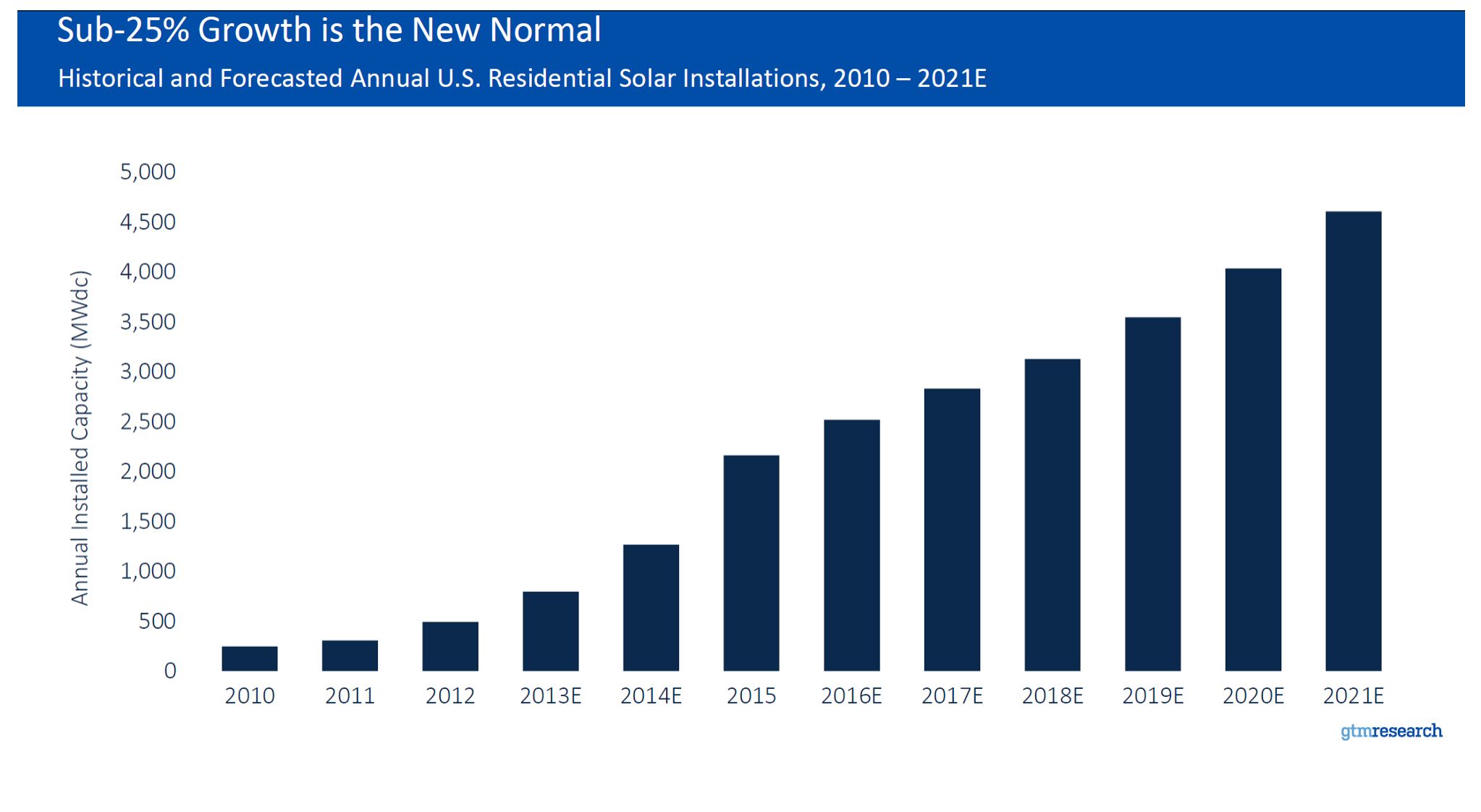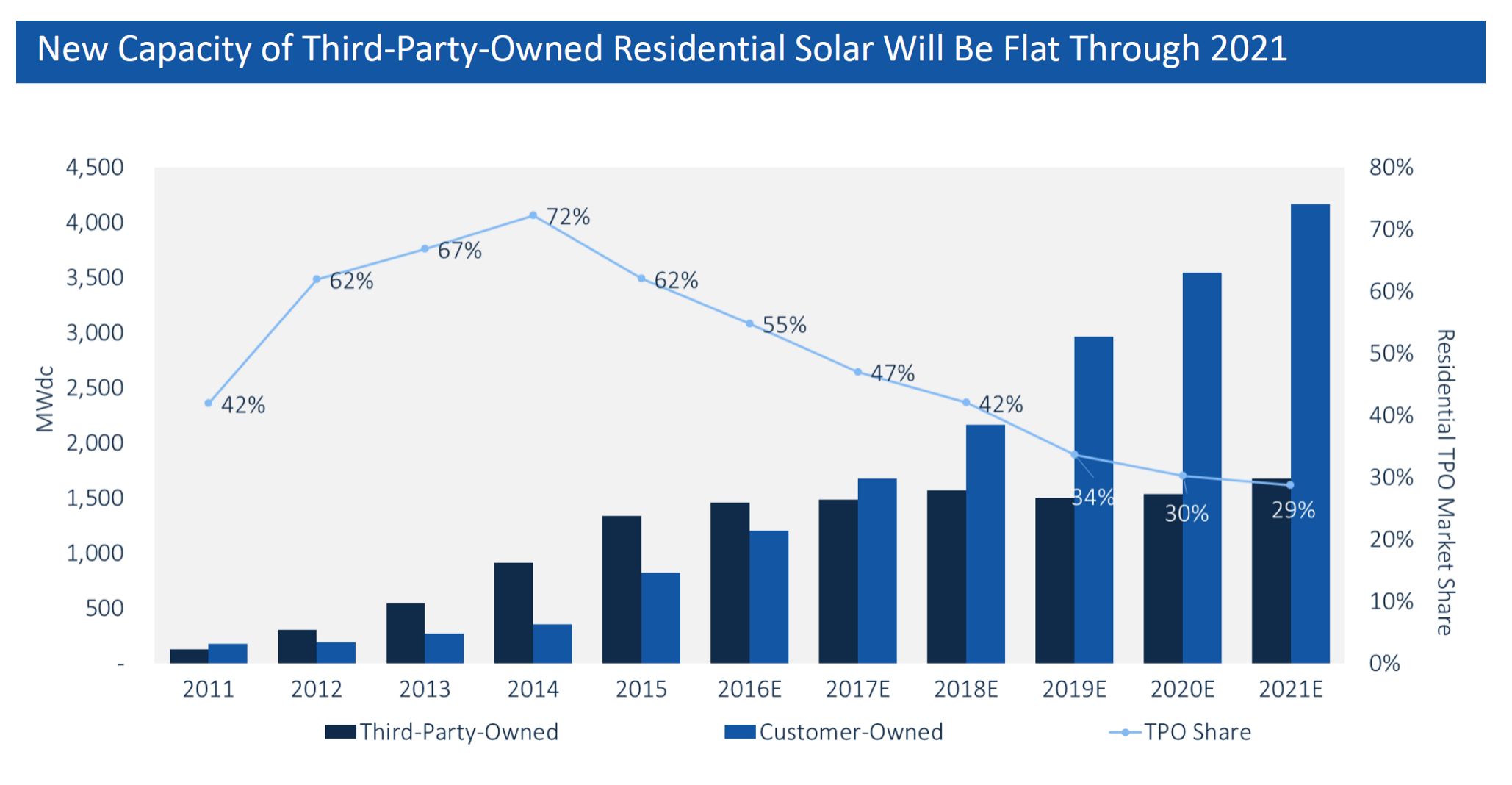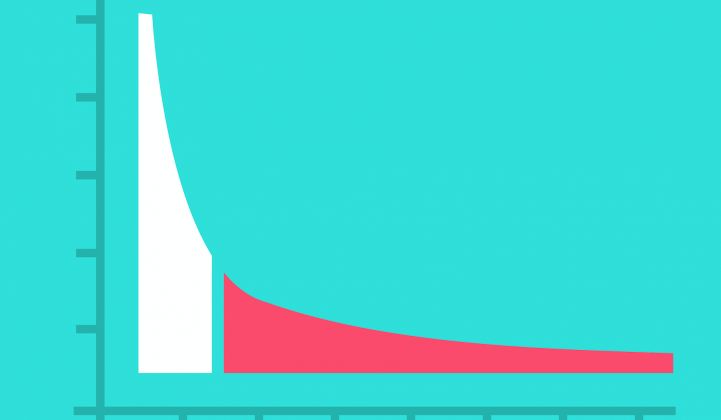Powerhouse is a solar startup incubator in Oakland. The effort was founded by the industry veterans Emily Kirsch and Danny Kennedy, both of whom have ridden through the many ups and downs of the solar industry over the last decade. Of course, like any good incubator, they needed some swag to share with visiting dignitaries. Given their history in the space, then, it’s no surprise that Emily came up with drink coasters to share, calling them “solar coasters.”
The solar industry’s famous ups and downs are often the result of supply and demand booms and busts, followed by whiplash in the profit margins of module suppliers, project developers and installers. But the solar-coaster ride has some other important implications.
One is playing out in the U.S. residential space right now. While much will be written about a potential decline in the overall solar market this year, the real action will be in residential solar rooftops. Utility and commercial-scale solar will likely see a decline this year. However, residential installations will continue to rise. This is due to nationally diverse demand, continued lower prices, and solar-friendly state policies.

The other big driver keeping residential solar on the upward track is the growing simplicity of financing. Over the last decade, companies like SolarCity, Vivint and Sunrun have helped bring solar within reach for millions of Americans with the innovations of tax-equity-based power-purchase agreements (PPAs). Primarily because of the need to aggregate very large amounts of tax equity, these new third-party ownership models favored larger, consolidated companies such as those mentioned above.
During the period 2010-2014, we saw what looked like an inexorable march toward a market forever dominated by a few third-party ownership players, with no room for what is known as the "long tail," best articulated by Chris Anderson. The long tail in solar is made up of the vast array of thousands of small solar installers across the country. This long tail system of vendors you trust as neighbors, friends and local businesses is prevalent in most aspects of the service industry -- from electricians to plumbers to contractors.
We are now about to witness a reversal of this consolidation and enter the period I call "the revenge of the long tail." The solar industry’s long tail has been losing ground over the last decade. Now, it is coming back -- with a vengeance. Here’s why.
Financing is democratized again
After nearly a decade of needing complex financial structures to make the economics work, solar is so inexpensive that we can get back to basics in the world of solar finance. PPAs and complex leases are no longer needed, and therefore aggregated tax equity is no longer needed.

Companies like Mosaic (an early Powerhouse company) and Sighten (both portfolio companies of Obvious Ventures) are stepping in with solutions to help small installers jump on these straightforward finance mechanisms. For these next-generation solar service providers, there’s no need for the expensive overhead, thousands of employees, and national networks. They simply serve the network that’s already out there in the form of the long tail.
Solar solutions are becoming commodities
Both the physical equipment and the professional platforms used to do the selling have also advanced in the last decade. Panels, inverters and the balance-of-system hardware can all now be bought in kits at costs only previously dreamed of, even in small volumes. Additionally, companies like Sighten are offering modern, single sign-on software-as-a-service toolsets which can help the small business installers across the country compete at the highest levels.
Solar finance gets simplified
This removal of the need for a large provider with Wall Street tax equity capabilities once again levels the playing field. Furthermore, with solar becoming more and more commonplace and technically standardized, the need for specialty know-how has been reduced. More likely than not, if you’re in a top 10 solar market, your trusted local electrician, roofer or contractor has some solar experience.

As the above chart from GTM Research shows, the revenge of the long tail is upon us. This is great news for solar consumers and small businesses across the country. It’s particularly exciting for states that haven’t been deemed large enough markets to warrant the attention of the major players in the industry. Dominant national players will have to prove their ability to adapt to lower-margin loans, and likely shed the vertically integrated corporate structures. Additionally, they’ll have to work with emergent software providers who are already proving more nimble than these large players.
The next big battlefield
The largest players out there will also have to show they can make progress on their customer acquisition costs. Recently, the news hasn't been good. While solar equipment prices are plummeting, the cost of acquiring new customers has been increasing for the largest players. Bottom line: Loans are a better solution for most customers, and working with local vendors simply makes more sense. This brings competition back to the local level for the national players.
As the solar coaster continues and you read about the inevitable woes of the major players, don’t forget the little guy. This long-tail group is precisely what we need to create a more resilient, dynamic and customer-centric industry.
***
Andrew Beebe is the managing director of Obvious Ventures. This piece was originally posted on Medium and was republished with permission. Follow Andrew and Obvious Ventures on Medium.



